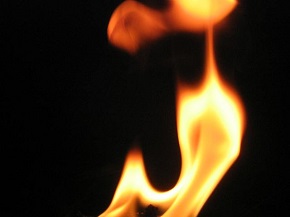BS 5839-1: Fire detection and fire alarm system for buildings. Code of practice for design, installation and commissioning and maintenance of systems in non-domestic premises
In August 2017, the British Standards Institution (BSI) revised the British Standard for fire detection and fire alarm systems in commercial buildings.
BS 5839-1:2017 'Fire detection and fire alarm system for buildings. Code of practice for design, installation and commissioning and maintenance of systems in non-domestic premises' is referred to in both volumes of Approved Document B, which concerns building regulations [in England] covering fire safety matters within and around buildings.
The standard covers the planning, design, installation, commissioning and maintenance of fire detection and fire alarm systems in and around commercial buildings. It is relevant to anyone involved in these areas of work.
It does not recommend whether or not a fire detection and fire alarm system should be installed in any given premises.
The sections in the standard are:
- Section 1: General.
- Section 2: Design considerations.
- Section 3: Limitation of false alarms.
- Section 4: Installation.
- Section 5: Commissioning and handover.
- Section 6: Maintenance.
- Section 7: User's responsibilities.
Some of the key changes in the standard include:
- Improved definition of the L2 fire alarm system which offers automatic detection on all escape routes.
- Modified guidance for use of multi-sector detectors.
- Requirement for clarification regarding the use of voice alarm detectors (VADs) and visual indicator devices (VID).
- Testing of the power supply, contingency power, and so on.
- Guidance for people working at night.
The revisions to the standard began before the Grenfell Tower fire in June 2017, with a public consultation held in 2016, and so it does not address residential buildings. However, a BSI spokesperson said that the standard may be further revised if investigations into the tragedy raise relevant points.
[edit] Related articles on Designing Buildings
- Approved Document B.
- BS 8414-2: Fire performance of external cladding systems.
- BS 9991:2015 Fire safety in the design, management and use of residential buildings. Code of practice.
- Carbon monoxide detector.
- Fire.
- Fire detection and alarm system.
- Fire detector.
- Fire safety design.
- Heat alarm.
- Multi-sensor alarm.
- Smoke detector.
- The role of codes, standards and approvals in delivering fire safety.
Quick links
[edit] Legislation and standards
Fire Safety (England) Regulations 2022
Regulatory Reform (Fire Safety) Order 2005
Secondary legislation linked to the Building Safety Act
Building safety in Northern Ireland
[edit] Dutyholders and competencies
BSI Built Environment Competence Standards
Competence standards (PAS 8671, 8672, 8673)
Industry Competence Steering Group
[edit] Regulators
National Regulator of Construction Products
[edit] Fire safety
Independent Grenfell Tower Inquiry
[edit] Other pages
Building Safety Wiki is brought to you courtesy of:






Comments
There is a mistake in the above line. VAD stands for visual alarm device NOT voice alarm detector...
This information in this article about voice alarm detectors (VADs) was sourced from BSI and appears to be correct - Ref https://www.bsigroup.com/en-GB/about-bsi/media-centre/press-releases/2017/september/BSI-revises-standard-for-fire-detection-and-fire-alarm-systems/